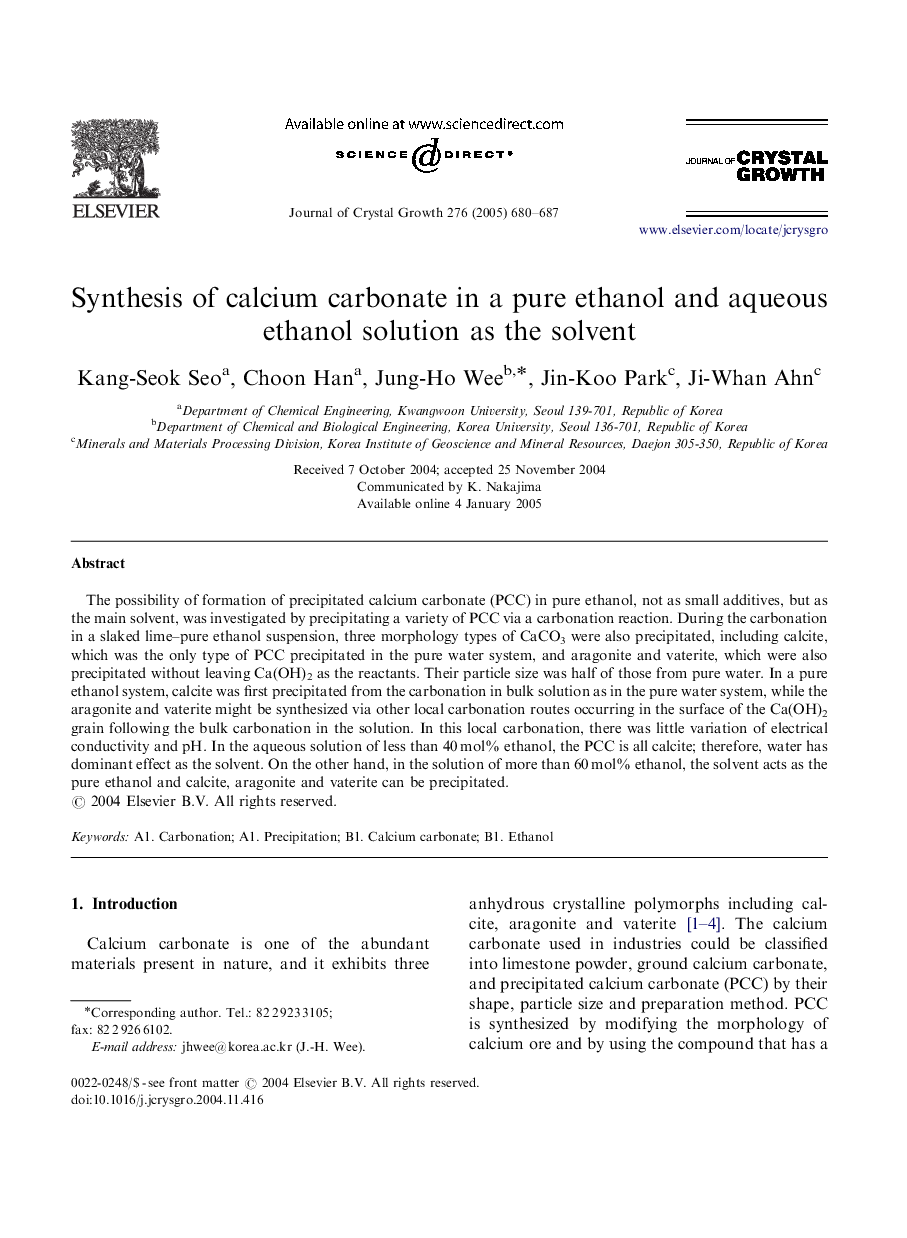| Article ID | Journal | Published Year | Pages | File Type |
|---|---|---|---|---|
| 9830023 | Journal of Crystal Growth | 2005 | 8 Pages |
Abstract
The possibility of formation of precipitated calcium carbonate (PCC) in pure ethanol, not as small additives, but as the main solvent, was investigated by precipitating a variety of PCC via a carbonation reaction. During the carbonation in a slaked lime-pure ethanol suspension, three morphology types of CaCO3 were also precipitated, including calcite, which was the only type of PCC precipitated in the pure water system, and aragonite and vaterite, which were also precipitated without leaving Ca(OH)2 as the reactants. Their particle size was half of those from pure water. In a pure ethanol system, calcite was first precipitated from the carbonation in bulk solution as in the pure water system, while the aragonite and vaterite might be synthesized via other local carbonation routes occurring in the surface of the Ca(OH)2 grain following the bulk carbonation in the solution. In this local carbonation, there was little variation of electrical conductivity and pH. In the aqueous solution of less than 40Â mol% ethanol, the PCC is all calcite; therefore, water has dominant effect as the solvent. On the other hand, in the solution of more than 60Â mol% ethanol, the solvent acts as the pure ethanol and calcite, aragonite and vaterite can be precipitated.
Related Topics
Physical Sciences and Engineering
Physics and Astronomy
Condensed Matter Physics
Authors
Kang-Seok Seo, Choon Han, Jung-Ho Wee, Jin-Koo Park, Ji-Whan Ahn,
